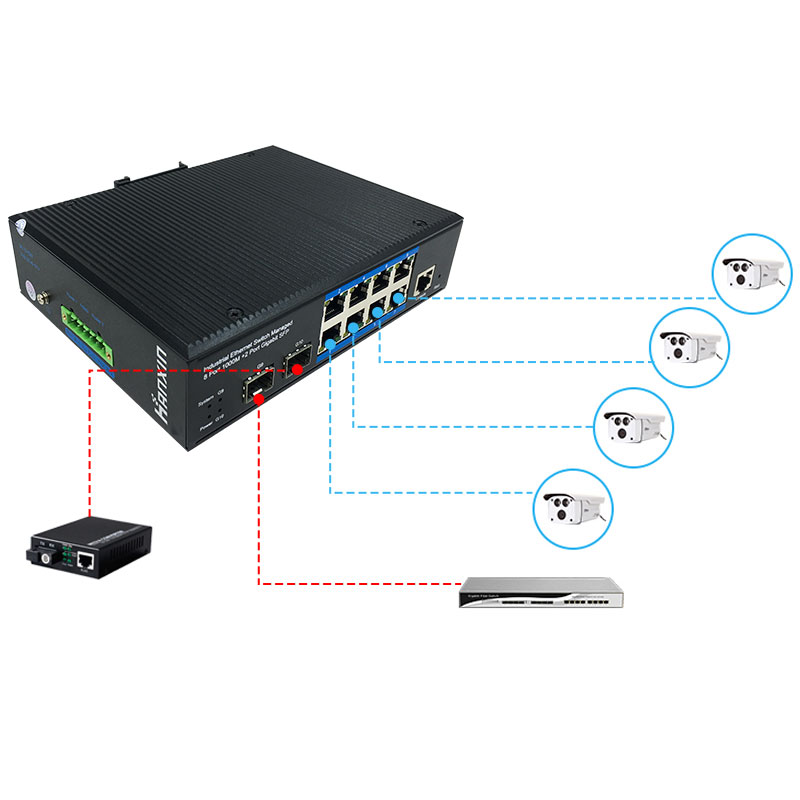The benefits of PoE Power over Ethernet for users are obvious. Because it only needs to install and support one instead of two cables, the price of an AC power interface is about US$100-300, and many live devices, such as video surveillance cameras, etc. , All need to be installed in places where it is difficult to deploy AC power. With the increase of devices connected to the Ethernet, if there is no need to provide local power for hundreds or thousands of devices, it will greatly reduce deployment costs and simplify its manageability.
reduce costs
There is no need to carry out tedious power wiring, which not only saves equipment power supply construction and maintenance costs, such as power cords, sockets, pipes, etc.
Centralized control
Manage the power of the device through a centralized switch. Reduce/reduce the energy and cost of the equipment as needed.
Save expensive electrician expenses
Using the existing network infrastructure can save expensive electrician costs and also save the time required for the layout and installation of the power supply system.
Extend the coverage of wired and wireless networks
Because when the remote device is connected to the network, it will be able to remotely control, reconfigure or reset. For example, it will be more convenient to change the position of the network camera. Since it is no longer limited by the power supply position, the position of the network camera can be changed more conveniently to obtain a better monitoring effect.
Flexible deployment
The location of equipment deployment is not restricted, and there is no need to consider whether the power socket is long enough. Terminal equipment such as APs can be flexibly installed at any remote location, such as the ceiling, the upper part of the partition, etc.
Reduce power supply risks
Through PoE, the power supply of various network equipment can be concentrated in one place, and even a set of uninterrupted power system (UPS) can be used to support network devices scattered in various places. In this way, even if there is a regional power failure Will not cause the shutdown of the system.
A complete PoE system includes two parts: Power Source Equipment (PSE) and Powered Device (PD). Both are based on the popular IEEE802.3af/at standard to establish the PD connection of the power source equipment. , Equipment type, power consumption level, etc., and use this as a basis for controlling the power supply end equipment PSE to supply power to the receiving end equipment PD through the Ethernet network.

 HANSUN
HANSUN 